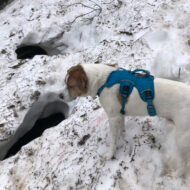Last week I shared how the acronym, DARN CAT, helps me identify change talk. To test whether it helps evoke change that lasts — and grows — I set my sights on hiking McClellan Butte. My reasons included:
- add to my hiking choices
- develop change skills that might carry over to other daunting challenges
- continue my ongoing search for BLING: Beauty, Love, Inspiration, Novelty, and Growth
- overcome a fear (False Evidence Appearing Real) that this particular trail is not safe enough to do with my dog Ajax
- use my superpowers in new ways to grow my self-efficacy in other areas
So, early Tuesday morning, May 28, Ajax and I arrived at the McClellan Butte parking lot before anyone else.

Add to Choices
Many of my hikes over the past four years have been excursions along the I-90 corridor in Western Washington. Visiting Pratt, Olallie, Island, and Rainbow Lakes this spring while snow still covered the upper trails made them feel new. By nature, I’m relatively cautious. I usually prefer to explore unfamiliar trails with someone who already knows the trail. Visiting a new trail alone — with nobody to consult except my dog — pushes me outside of my comfort zone. In effect, it parallels what I’m trying to do with my coaching career. By adding to my hiking choices and trying something new, I’m hoping to evoke change to face scarier things, like marketing.

YOUR TURN: If you are working on changing in some area, whether from the last blog post or something new, think about your WHY. What will be different if you make this change? How will your life improve? Think of similar changes you’ve made in the past. What helped you succeed? Can you use those same skills to help you?
Evoke Change with New Skills
Since sharing my commitment, I practiced additional steps of change to help ensure success:
- Free my schedule – by rescheduling my usual Tuesday hike to the following day, I gave us as much time as possible to succeed.
- Shape the path – I filled the tank with gas and packed extra food and water, tempting treats for Ajax, a sit pad, gaiters, poles, rain and snow gear, and microspikes.
- Boost enthusiasm — since I love to write and help others succeed in the mountains, I submitted trial trip and Ebird reports to help fuel my excitement
- Gather information — checking weather reports and recent trip reports (see the one I prepared for the WTA/Washington Trails Association) is something I do before every trip, to arm myself with as much knowledge as possible
- Prepare navigation — by studying the route, I anticipated paying closer attention at the beginning.
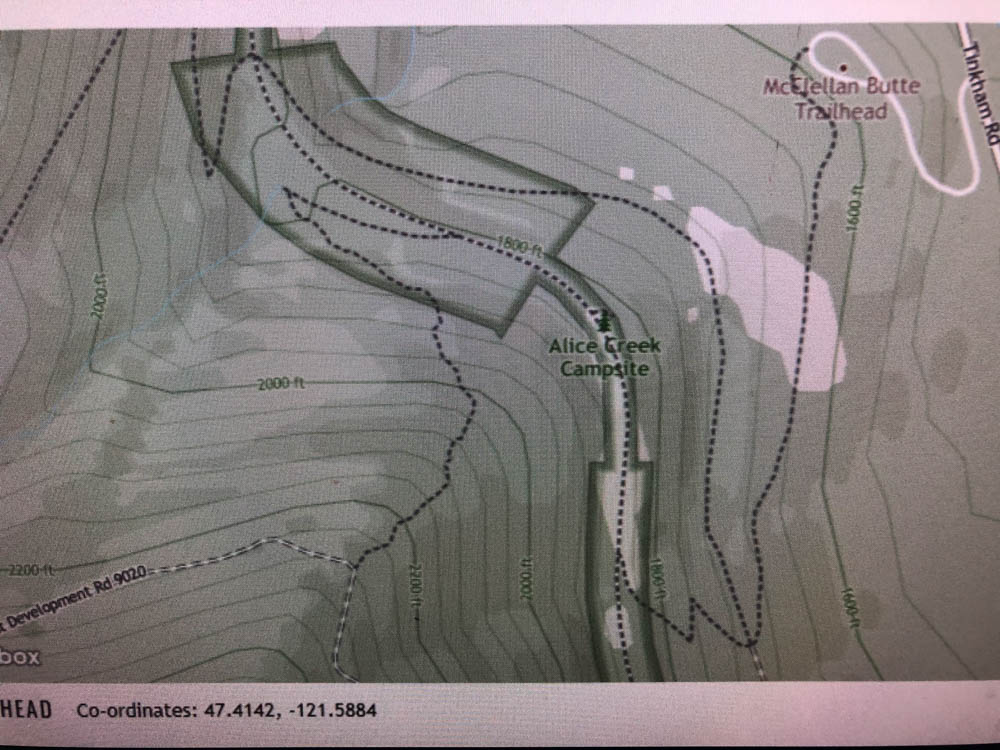
YOUR TURN: Think about some of the skills you need to make your change. What obstacles might you encounter? Who do you know who has done what you want to do? Might they have some advice or suggestions to make your journey easier?
Evoke Change by Searching for BLING
One of the acronyms I turn to when I go on adventures (courtesy of my mother) is to look for Beauty, Love, Inspiration, Novelty, and Growth.
Beauty
We wound through power lines, old forests with enormous cedars and Doug firs, service and forest roads, snowfields, and talus slopes. McClellan Butte trail has some of everything. Even in the fog, I could tell I wanted to return when I could see more of my surroundings.
Love
Joy filled me as 17 species of birds serenaded us, including olive-sided flycatchers, warblers, three types of thrushes, and a sapsucker. Exploration with my dog scouting before me, periodically checking to make sure I’m right behind him, always brings a smile to my face. Fresh cedar perfumed the air near immense logs that must have been cut recently. As we navigated downed logs, tree roots, and snow slopes with confidence and ease, my body thrummed and buzzed with vitality. Nature fills me with life, peace, and love like nothing else.

Inspiration
Hiking into the clouds, as fog turned to drizzle, turned the mountains magical, mysterious. To feel confident, competent, and empowered in the mountains feeds my soul and makes me crave more.
Novelty
The last time I hiked this trail was 25 years ago. I couldn’t remember anything about it, so everything about it felt new. Anytime we evoke change, we face novelty. And if we look at the good that could come from it rather than the scary, it makes novelty feel more engaging and fun.
Growth
The vulnerability of hiking solo under challenging conditions grows my confidence, heightens my senses, and makes me more self-aware.
YOUR TURN: As you evoke change, can you use the elements of BLING to make it more intriguing, less scary, and more compelling? What could happen if you reframe your obstacles into positive opportunities? How does that change your resistance?
Overcome a Fear
One of my primary objectives was to rewrite the internal story that I faced higher, maybe unnecessary, risks exploring alone. I told myself that anytime I felt out of my element, we would turn around. If I felt like it was unsafe for me or my dog, there was zero shame in returning another time. Others had reported turning around at the snow. My goal was to see as much of the trail as we could under current conditions.
When facing anything scary, whether going into enclosed spaces, attending a party where you know nobody, entering a gym for the first time, or trying anything new, give yourself an escape hatch. There is nothing wrong with starting something and then deciding not to continue. Once you overcome inertia by taking a small action, you’re most of the way there. If you never try, you’ll never succeed.


Snow Runnels
When we reached the first of seven snow runnels on the north slope, starting at about mile 2.5, the amount of snowpack surprised me. Ajax easily scampered across, his claws behaving as natural crampons, and I soon realized the footing was solid enough that I didn’t need traction. I did, however, need a pole to test solidity.
At the final runnel, just before the trail veered west, I could no longer hear running water. Ajax shook, drawing my attention. I glanced up to see him retreat from several large tree wells. (I will never take my dog anywhere there might be hidden crevasses). We’d reached our turn-around point.

YOUR TURN: When thinking about your change, what, if anything, are you afraid of? If you had no fear, what might you do? What tiny steps might you take to confront and overcome your fear?
Use Your Superpowers to Evoke Change
Except… Had we?
I strapped on my microspikes and got out my second pole, preparing to descend. After testing out my footing for a minute, I realized Ajax was still sitting where we’d stopped. Despite calling him, he refused to come, which is unusual. He looked at me as though to say, “No way, Mama, we came all this way. We’re not finished yet!”
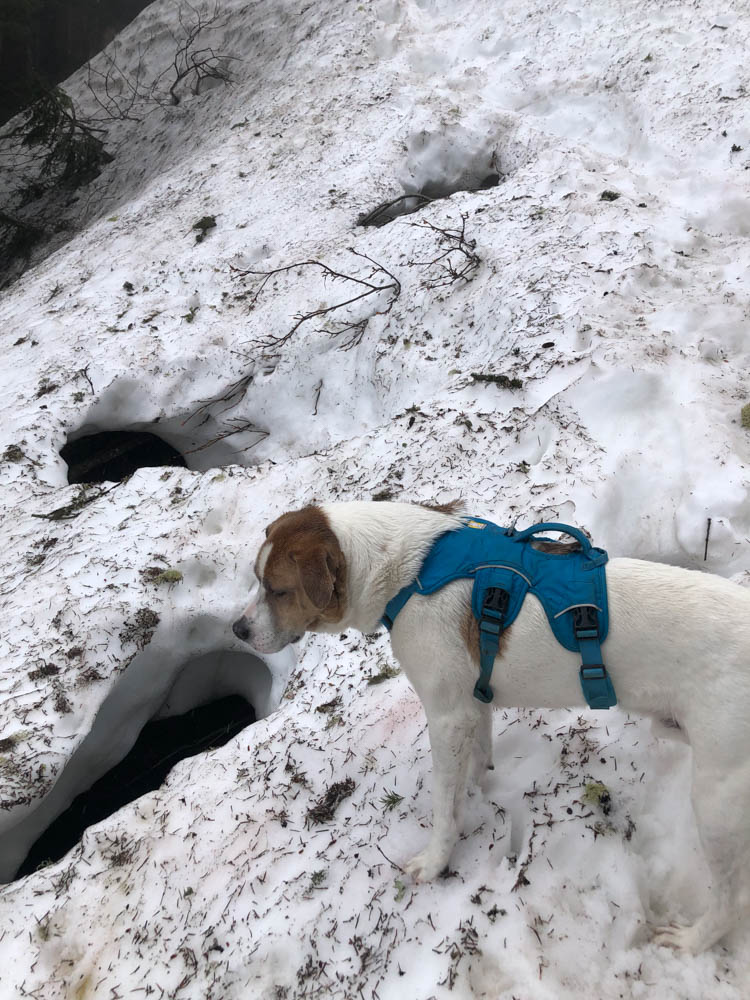
Laughing at his expression, I got an idea. Maybe he was right. Maybe we weren’t done yet. If he was willing to keep trying, I could, too. I used my mountaineering skills to kick steps well above the dangerous zone. Ajax diligently followed in my footsteps, and a few minutes later, we safely jumped off the snow and landed on the dirt trail.
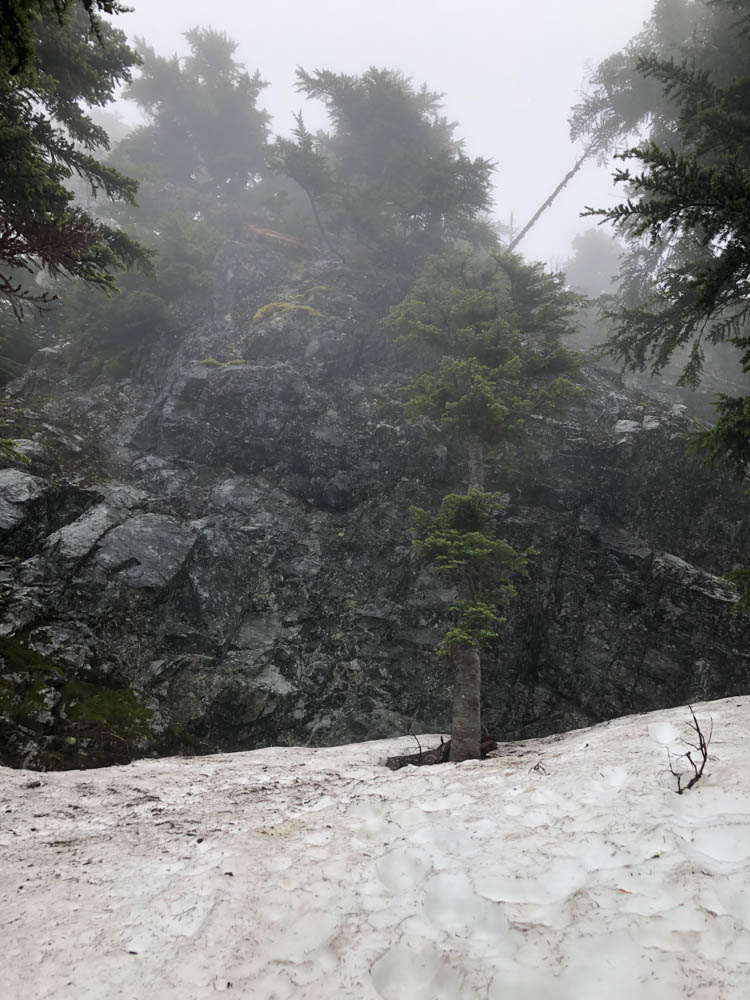
The danger behind us, we traveled west on deep snow, then north to the base of the summit block, a vertical scramble and our final destination. I wished my “Energizer dog” a happy ninth birthday and gave him extra treats when, at last, we found a safe, level dirt patch to take a long, foggy, rainy break before retreating to the car.
YOUR TURN: What are your superpowers and how might you get creative using them for this change? If you tried one way and failed, what could you learn from that experience that might make you more successful next time?
Takeaways
Ajax is the best hiking companion I could ever wish for. He never complains, is always willing to try new things, and has incredible stamina for a nine-year-old Labraheeler. On this adventure to evoke change, he helped me see things differently, not once, but twice, when I considered turning around.
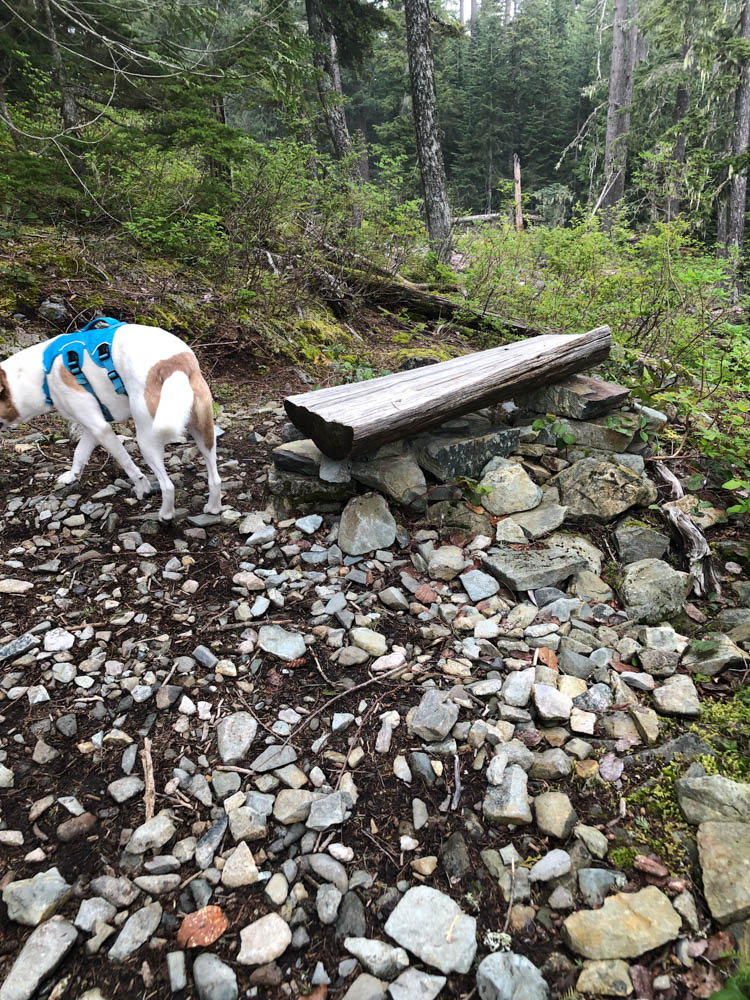
As I review our successful experiment, four takeaways relate to the larger picture of how we evoke change:
- It’s okay to start something multiple times. You will never succeed at anything unless you try.
- Facing and overcoming tiny fears makes you more courageous and more capable of addressing larger fears next time. It’s a skill as well as a muscle. The more you work it, the stronger you become.
- There is no shame in stopping or turning around, only in never trying in the first place.
- If you establish reasonable expectations – exploration, adventure, discovery, BLING – you might enjoy your experience instead of struggling through it.
So have fun, play, explore, and take chances. They are what create our lives. I’m already planning my next solo adventure with my dog. Where will we end up next?
If this post resonates with you, or if you have questions or ideas for future topics, please share in the comments. This blog is for both you AND me. I want to provide content that helps. And writers always love hearing from readers!
